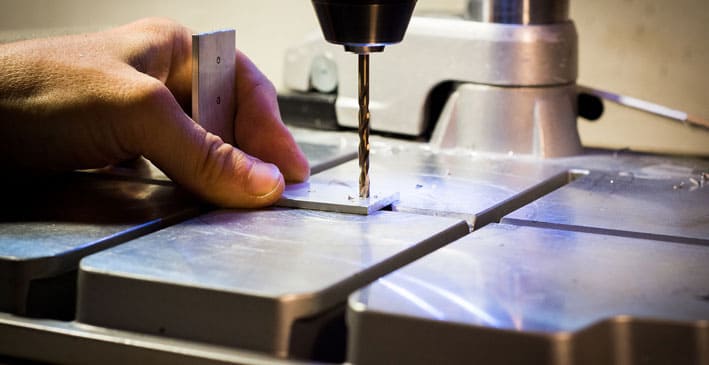Metal is a common material which most professional installers will have to drill into at some point in time. However, there are many different types of metal with varying degrees of hardness and many different solutions to install.
One of the most popular types of screw for fixing metal is the self-drilling screw. Self-drilling screws do not need a pilot hole to cut through the metal and are good at fastening metal to metal or wood to metal.
Although metal is a hard material, drilling through metal is not much different from drilling into other types of material.
How to screw into metal – tools and materials
- Safety wear: Those who are looking to drill into metal should protect their eyes injury as it only takes a small part of metal to fly of can cause some serious damage. For optimal safety, glasses should wrap around the side of the face as well. Due to the sharp metallic shavings that can be created when drilling into metal it is also recommended to wear heavy duty leather gloves.
- Drill bits – depending on the hardness of the metal material it is not necessary to have a special drill bit and almost any general purpose one will do the job. However, if you will spend a lot of time drilling into harder metals like stainless steel then you will need to get a heavier duty one made of titanium or cobalt which resist heat and friction better. Other types of drill bits include those made of black oxide or high-speed steel (HSS).
- Lubrication – If you are drilling larger holes it is recommended to use a cutting fluid or oil to help with lubrication and reduce friction and heat build-up. This will help with the drilling and will allow your drill bits to last a bit longer. However, when drilling into softer materials this will not be necessary.
- Clamps – When drilling you should always try to avoid holding the material with your hands and instead use a clamp to secure in place. When drilling into sheet metal it is recommended to create a “sandwich”. The metal sheet clamped between 2 pieces of wood will help keep it flat and prevent the drill bit from wandering.
Steps to follow for drilling metal
Depending on the type of screw being used it might not be necessary, but it is often recommended to use a pilot hole to make sure the screw doesn’t wander and allows easy penetration for the screw.
When screwing in the screw you should start slowly until the screw finds its centering and then you can increase the speed of the drill. You should stop drilling when the top of the screw touches and tightens against the metal. Make sure not to tighten the screw too much, applying too much pressure will either snap the screw or strip the threads formed.
Types of screws for metal
Self-tapping low head screw FS – Has a low head type rivet and the PH recess has no cone under the head, allowing it to sit perfectly in the base of the sheet metal.
Self-drilling extra-flat head screw CET – Specially designed to facilitate the opening of aluminium door slides. Capable of drilling aluminium sheets up to 1.5mm thick
Self-tapping screw DIN 7981 – Made of high quality steel and available in many different coatings.
Self-drilling screw DIN 7504K – has a special drill point that allows drilling in sheets up to 6mm thick.


